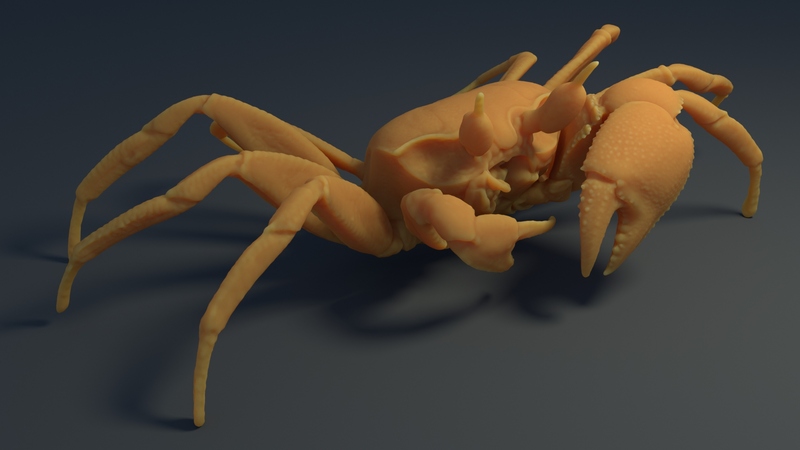Subsurface Scattering(SSS)¶

Subsurface Scattering Shader.¶
Subsurface Scattering (サブサーフェススキャタリング:SSS)ノードは、皮膚、ワックス、大理石、ミルクといった素材向けに、シンプルな表面下散乱を追加するために用います。これらの素材の場合、光は表面で直接反射するのではなく、表面を通して内部で反射してから、吸収されるか、近くのポイントから表面を離れていきます。
RGBカラーチャンネルごとに、平均の色のばらつきを設定できます。たとえば、肌の場合、赤い色がさらに分散し、独特な赤い色の影と柔らかな外観となります。
入力¶
- Color(カラー)
Color of the surface, or physically speaking, the probability that light is reflected for each wavelength.
- Scale(スケール)
散乱半径のグローバルスケール係数。
- Radius(半径)
光がサーフェスの下を散乱する平均距離。半径が大きいほど、光が影に流れ込み、オブジェクトを通過するため、柔らかな外観になります。散乱距離はRGBチャネルに対して個別に指定され、赤い光がより深く散乱する皮膚などのマテリアルをレンダリングします。X、Y、Zの値は、それぞれR、G、Bの値にマッピングされます。
- Sharpness(シャープ)
Used only with Cubic falloff. Values increasing from 0 to 1 prevents softening of sharp edges and reduces unwanted darkening.
- Normal(ノーマル)
Normal used for shading; if nothing is connected the default shading normal is used.
- Texture Blur
How much of the texture will be blurred along with the lighting, mixing the texture at the incoming and outgoing points on the surface. Note that the right choice depends on the texture. Consider for example a texture created from a photograph of skin, in this case the colors will already be pre-blurred and texture blur could be set to 0. Even for hand-painted textures, no blurring or minimal blurring might be appropriate, as a texture artist would likely paint in softening already. One would usually not even know what an unblurred skin texture looks like; we always see it blurred. For a procedural texture on the other hand this option would likely have a higher value.
Properties(プロパティ)¶
- Falloff(減衰)
サブサーフェススキャタリングをシミュレートするレンダリング方法。
- Cubic(三次式)
Is a sharp falloff useful for many simple materials. The function is \((radius - x)^3\).
- Gaussian(ガウシアン)
Gives a smoother falloff following a normal distribution, which is particularly useful for more advanced materials that use measured data that was fitted to one or more such Gaussian functions. The function is \(e^{-8x^2/ radius^2}\), such that the radius roughly matches the maximum falloff distance. To match a given measured variance v, set \(radius = sqrt(16 × v)\).
- Christensen-Burley
Is an approximation to physically-based volume scattering. Gives less blurry results than Cubic and Gaussian functions.
- Random Walk
Cycles Only Provides the most accurate results for thin and curved objects. This comes at the cost of increased render time or noise for more dense media like skin, but also better geometry detail preservation. Random Walk uses true volumetric scattering inside the mesh, which means that it works best for closed meshes. Overlapping faces and holes in the mesh can cause problems.
出力¶
- BSSRDF (双方向散乱面反射率分布関数)
BSSRDF shader output.
